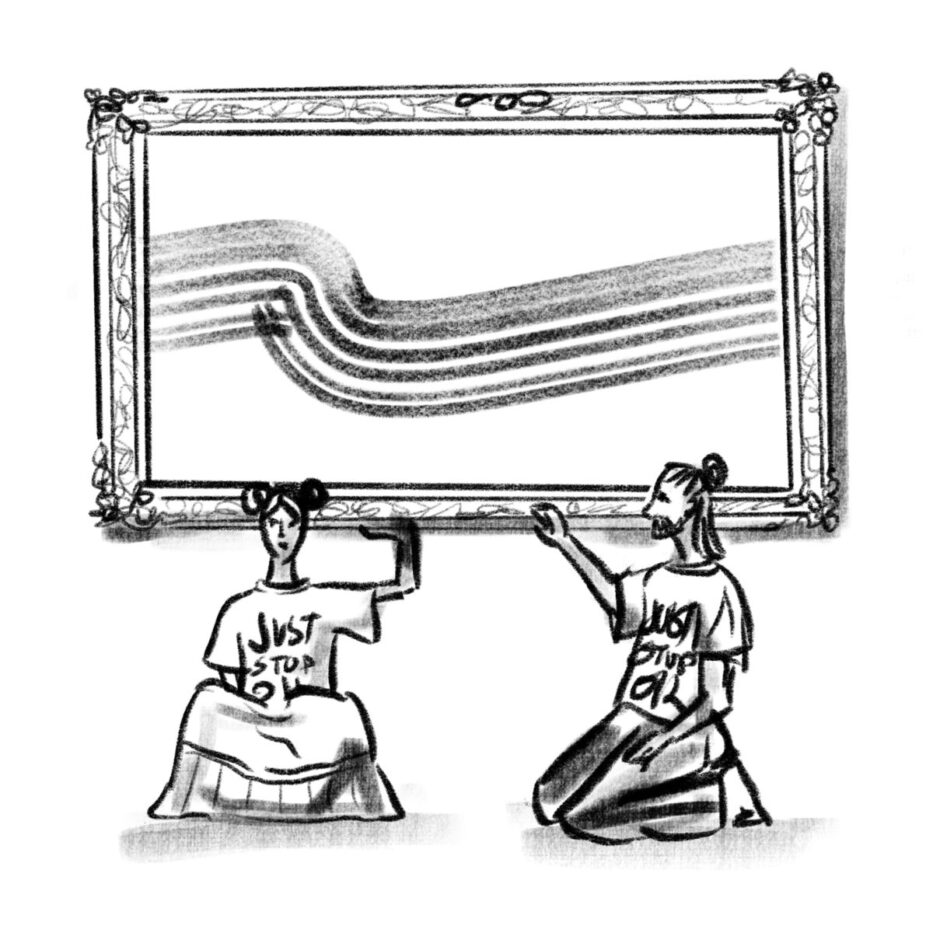
Image by Ivy Sanders Schneider

Image by Ivy Sanders Schneider
On July 4, around 2 p.m., I stood staring at Velázquez’s “The Rokeby Venus” in the National Gallery in London. It’s barely noticeable, but if you look closely, you can see that tiny stitches bind five cuts slashed into the painting’s canvas — an act of civil disobedience performed by the Canadian suffragette Mary Richardson 108 years ago as part of the campaign that won women the right to vote.
I was about to take the same radical leap of faith, just one room over, where my boyfriend and I were planning to glue our hands onto the frame of John Constable’s “The Hay Wain” in support of Just Stop Oil’s demand that the U.K. government stop licensing the extraction of oil and gas.
Thinking of Richardson’s courage, my nerves dissipated. Civil resistance had long been written into the history of this gallery — and with real results. When petitions fall on deaf ears and when our government continues to fund humanity’s destruction, what choice do we have but to take drastic action?
At 2:15 p.m., a young school group gathered next to “The Hay Wain.” The children were no older than my boyfriend’s younger siblings. As the group looked on, we covered Constable’s iconic English countryside with a reimagined version. In this alternative scene, the sky is heavy with pollution, which belches from cities on the horizon, and trees are scorched by wildfire. It’s an image that will become reality if our reckless governments continue to greenlight new fossil fuel production. As I hung the last panel, applause and cheers from the young schoolchildren filled the gallery. I grasped my boyfriend’s hand and rested my forehead against his, my other palm stuck firmly to the gold, antique frame. In that brief moment of stillness, I felt certain that committing to civil resistance, committing to a livable future for the generations to follow, is exactly what I want to do. And the cameras rolled.
Hannah Hunt is a 22-year-old activist who has been arrested a number of times supporting Just Stop Oil.